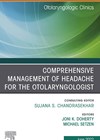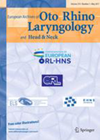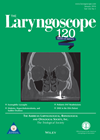
Journal Reviews
Is benign intracranial hypertension underdiagnosed in patients with spontaneous CSF leaks?
In ENT practice we come across spontaneous CSF leaks. Patients present either as unilateral watery rhinorrhoea or otorrhoea, or sometimes as hearing loss with a watery middle ear effusion. Clinicians, after confirming the diagnosis of CSF leak with beta 2...
Skull base imaging: a review
This excellent review paper describes the anatomy, imaging protocols and differentiating imaging findings on CT and MRI in myriad skull base lesions. Skull base protocol MRI and thin section CT are required to evaluate all skull base lesions. According to...
Managing spontaneous CSF leaks secondary to benign intracranial hypertension
Spontaneous CSF leaks are a rare entity. In this paper, a Spanish group report their experience managing the condition using endoscopic surgery in 35 patients over an eight year period. Leak locations included the cribriform plate (18/35), ethmoid roof (15/35)...
Type 2 diabetes and BPPV
Previous research has shown an association between BPPV and certain medical conditions such as hypertension, hyperlipidaemia and type 1 diabetes. The authors in this retrospective observational study investigated the interaction between BPPV and type 2 diabetes by examining the ‘role...
Recovery rates in sudden sensorineural hearing loss
Sudden sensorineural hearing loss (SSNHL) is most commonly idiopathic, and is seen relatively frequently in ENT practice. Recovery spans a period of around 1-2 months, and ultimate outcomes are highly variable, from complete recovery to no detectable hearing. Although the...










